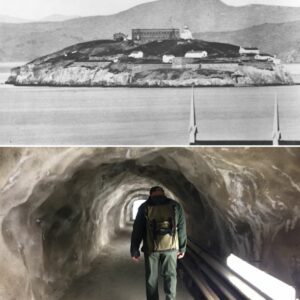The SS United States, once a beacon of American engineering and maritime innovation, embarks on its final journey—one that will take it from the iconic pier in South Philadelphia to the warm waters of the Gulf of Mexico, where it will serve as an artificial reef. This ship, which once broke records and transported some of the world’s most renowned passengers, is now preparing to begin a new chapter under the sea. However, its journey from a grand ocean liner to an underwater habitat is filled with both nostalgia and promise, as the ship’s fate transforms from a decaying relic to a vibrant ecosystem.
The Historic Departure: A Bittersweet Farewell
On February 19, 2025, the SS United States made its first move in nearly three decades, leaving its home in Philadelphia and setting sail down the Delaware River. The departure, which had been delayed multiple times due to logistical and weather concerns, marked the end of an era for the legendary vessel. For many, seeing the ship finally move was a bittersweet moment. The ship had been docked along the Delaware River for almost 30 years, becoming a nostalgic monument for many Philadelphians who had passed by it throughout their lives.
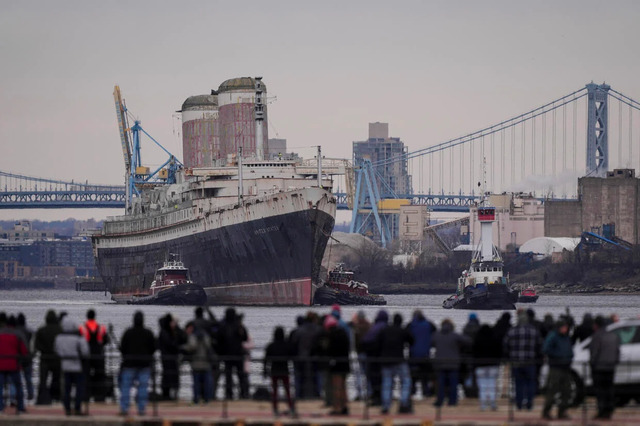
Dozens of people gathered along the riverbank to bid the ship farewell, including former passengers who had memories of traveling on the ship during its prime. For them, the SS United States was more than just a ship; it was part of their personal history. “We know her future now. It was uncertain for several years, and we know her future now. That’s comforting. But it’s a sad day,” said Warren Jones, a former passenger from the 1950s. As the ship began its journey toward its final destination, many shared a sense of sadness but also relief that it was being repurposed in a meaningful way rather than scrapped.
Video
Watch WATCH: SS United States Pulls Into Mobile, Alabama to witness the historic return of the iconic ocean liner to Alabama. A fascinating moment in maritime history!
The Final Journey: From Philadelphia to Mobile, Alabama
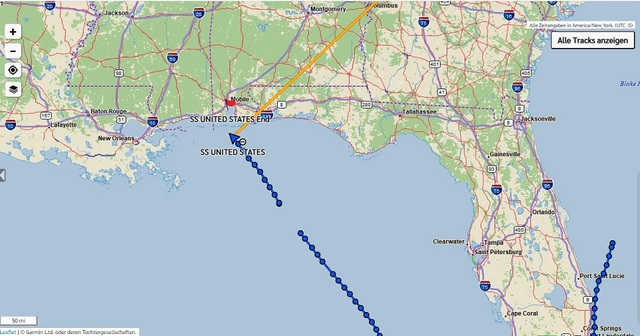
The SS United States’ journey to its final resting place began with a 1,800-mile voyage to Mobile, Alabama. It took the ship nearly two weeks to reach its pit stop in Mobile, where it would undergo the necessary preparations before being sunk to the bottom of the Gulf of Mexico. The ship was towed by tugboats and cruised through the waves, offering a rare sight for those who had followed its progress over the years. The ship arrived in Mobile two days ahead of schedule, a testament to the efforts of the tugboat crew, who expedited the process to avoid rough seas as severe storms were expected.
Once in Mobile, the ship was brought into the port for the next phase of preparations. Crews would spend months carefully cleaning and stripping away any hazardous materials from the vessel, including leftover fuel, plastics, and wiring. The ultimate goal was to ensure the ship would cause no harm to the environment once it became part of the marine ecosystem. Alex Fogg, the natural resources chief for Destin Beach, Florida, noted, “The last thing we want to do is harm the environment we’re trying to help.”
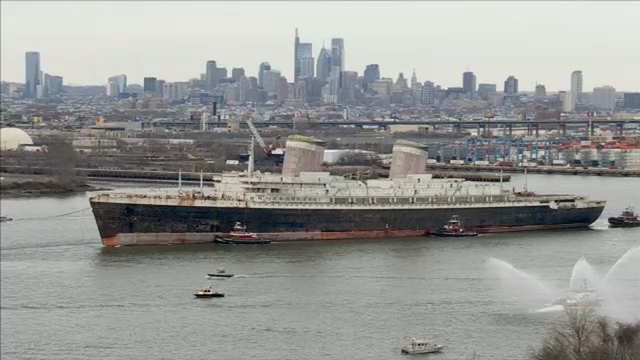
The Glory Days: The Rise of the SS United States
The SS United States’ legacy is not just about its final voyage; it is also about its incredible history during its active years. The ship was christened in 1952 and quickly became an icon of American engineering. It was designed to be the fastest passenger liner in the world, capable of transporting thousands of troops during wartime. On its maiden voyage from New York to France, it shattered transatlantic speed records, crossing the Atlantic in just three days, 10 hours, and 40 minutes—10 hours faster than the RMS Queen Mary.
The ship’s speed and luxury made it a symbol of American pride, and it hosted many famous figures, including U.S. Presidents Harry Truman, Dwight Eisenhower, John F. Kennedy, and celebrities like Marilyn Monroe and Judy Garland. As a military vessel, it also played a vital role during the Cold War, demonstrating the strength and technological capabilities of the United States.
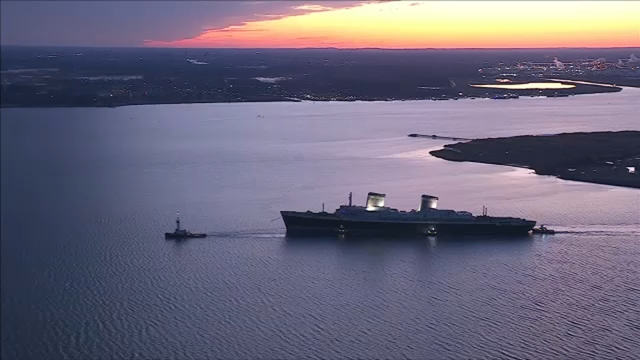
Environmental Rebirth: The Ship’s Transformation into an Artificial Reef
While the SS United States may have seen its last voyage as a passenger ship, it will continue to have a profound impact—this time as an artificial reef. In 2024, Okaloosa County, Florida, purchased the ship with plans to sink it off the coast of Destin, Florida, where it will be submerged about 180 feet beneath the Gulf’s waters. The ship’s transformation into an artificial reef will not only help boost marine biodiversity but will also serve as a unique tourist attraction, drawing divers and marine life enthusiasts from all over the world.
The ship will become the largest artificial reef in the world, a habitat for fish and other wildlife. Its presence will contribute to the creation of a thriving ecosystem where marine life can flourish. In fact, artificial reefs like the SS United States have been proven to provide shelter for marine creatures and promote the growth of coral and other underwater life.
A Dual Approach: The Museum and Visitor’s Center
Alongside its submersion, the SS United States will also be remembered through a state-of-the-art museum and visitor center in Okaloosa County. The museum will chronicle the ship’s storied history and its unique role in both American and maritime history. Modern-day technology will be used to present original artifacts and artwork from the ship, including one or both of its funnels and radar mast, recreating areas of the vessel using the original materials.
This museum will serve as a testament to the ship’s enduring legacy, ensuring that future generations will be able to experience the grandeur of the SS United States. As Susan Gibbs, President of the SS United States Conservancy, remarked, “This next chapter of the SS United States’ story will bring tens of thousands of people annually from around the world to experience her.”
The Ship’s Final Resting Place: Beneath the Gulf of Mexico
Once it has been fully prepared, the SS United States will be lowered into the waters off Destin, Florida, where it will rest as part of the underwater reef system. The sinking will not only be a ceremonial end to the ship’s legacy but will also mark the beginning of its role in the marine ecosystem. The new reef will provide ample opportunities for divers to explore the ship’s remains and witness the beauty of marine life thriving around it.
The underwater grave of the SS United States will become a reminder of the ship’s incredible history, not as a decaying piece of maritime history, but as a vibrant contributor to life beneath the sea. It will also serve as a symbol of how human innovation and nature can coexist, transforming what once was a majestic ocean liner into a haven for marine creatures.
The SS United States’ Legacy: Innovation, Nostalgia, and Renewal
The SS United States will always hold a special place in the hearts of those who remember it in its prime, as well as in the history of American innovation. From its speed records to its role as a military vessel, the ship represented the pinnacle of maritime engineering and a symbol of American might during the mid-20th century.
But now, as the ship finds its final destination beneath the Gulf of Mexico, it is also a symbol of renewal. Its transformation into an artificial reef showcases how the ship can continue to provide value and beauty, contributing to the marine ecosystem for years to come.
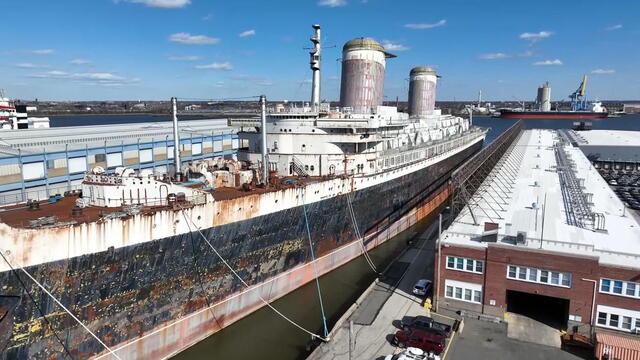
Video
Watch Exploring Inside the SS United States – The Final Ship Tour 2025 to take a rare and exclusive tour of the iconic ocean liner before its final journey. A must-watch for maritime history fans!
Conclusion: A Journey from Ocean Liner to Underwater Habitat
The SS United States’ final voyage may be one of its most poignant chapters, but it is by no means the end of its story. As an artificial reef, it will live on in a new form, offering shelter to countless marine creatures and becoming a destination for divers and history enthusiasts alike. The ship’s legacy will remain, both above the surface in the museum and visitor center, and below the surface, where it will continue to thrive as part of the natural world. The SS United States’ story is a testament to the power of reinvention and the lasting impact of innovation—one that will continue to inspire for generations to come.

